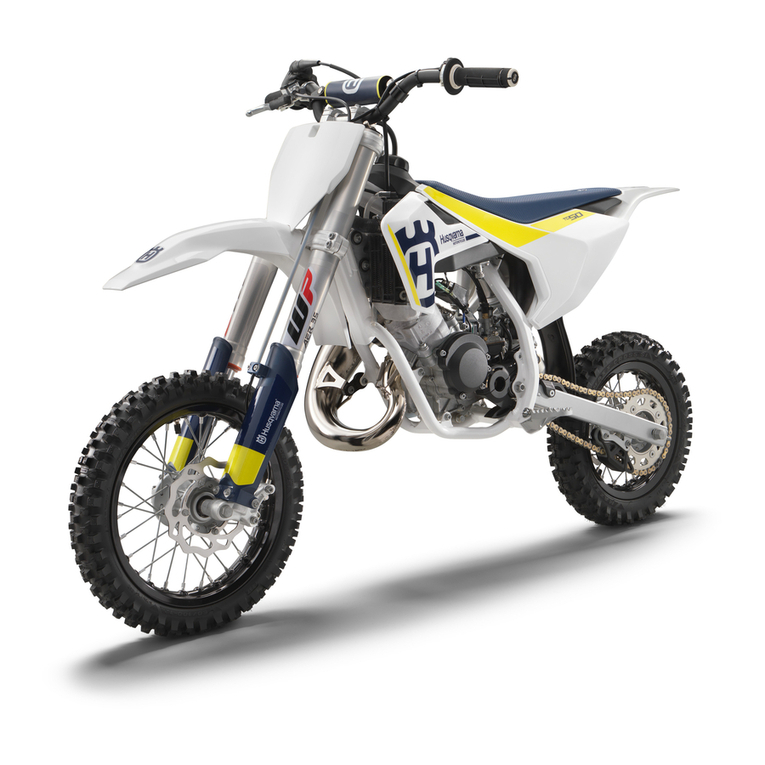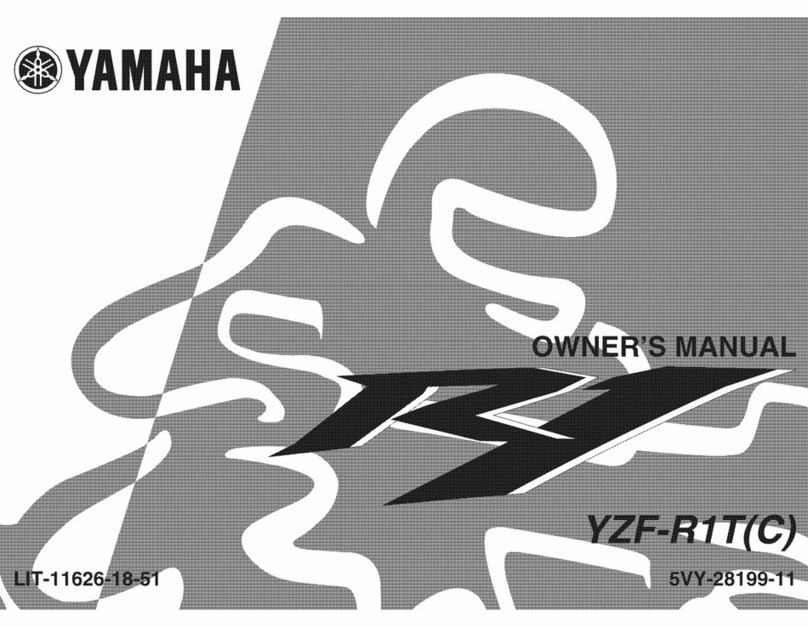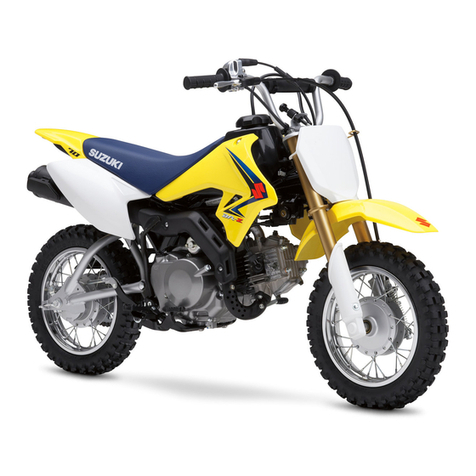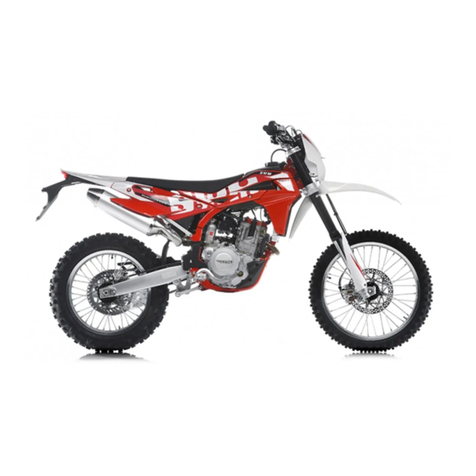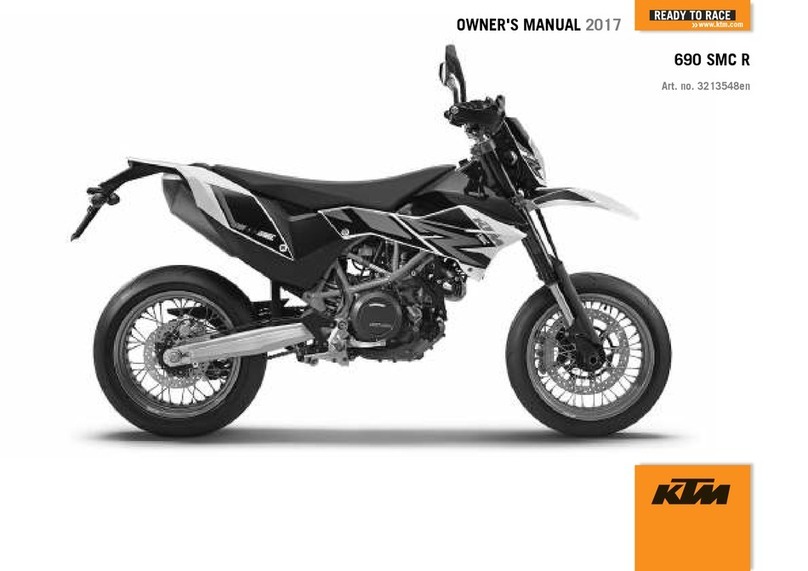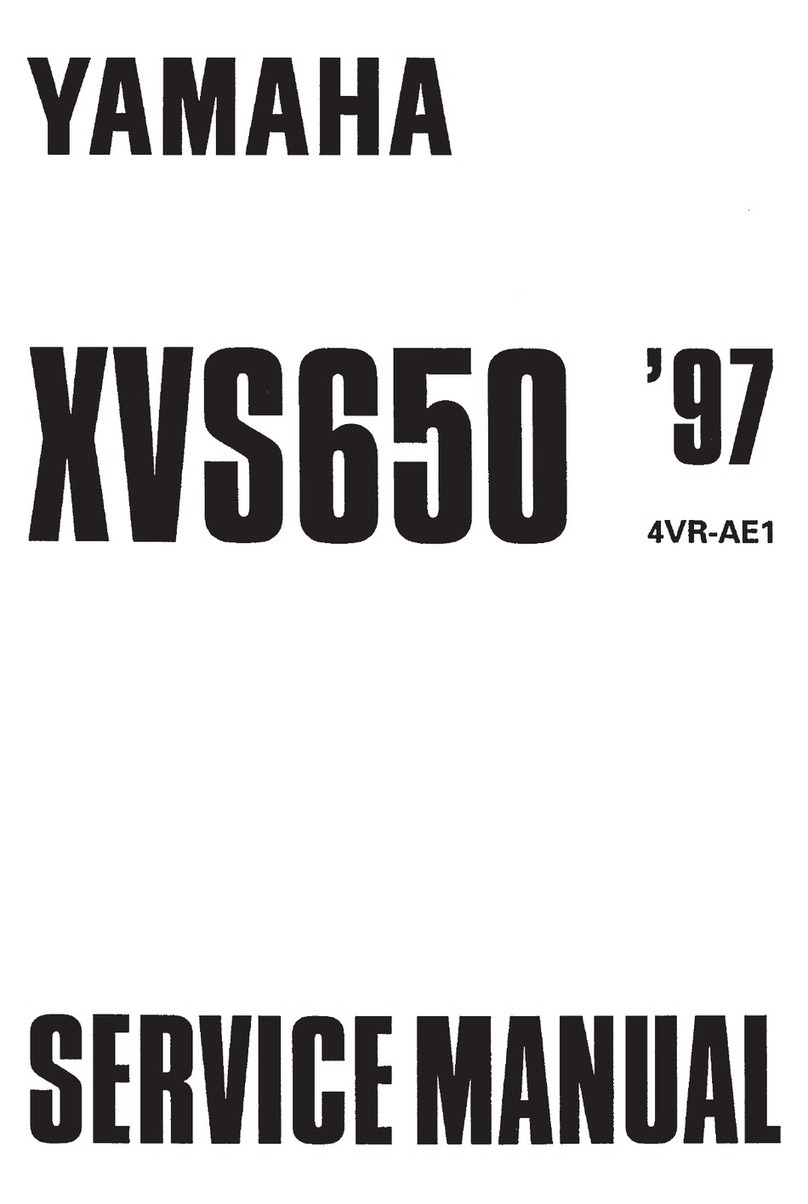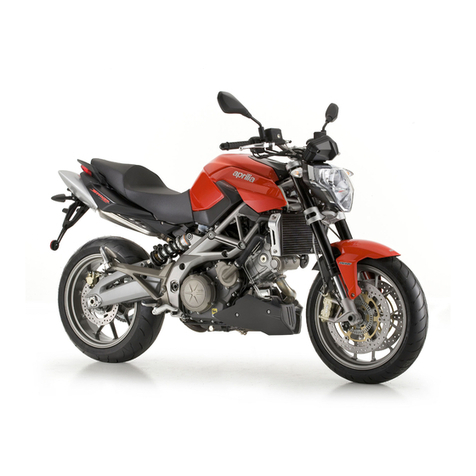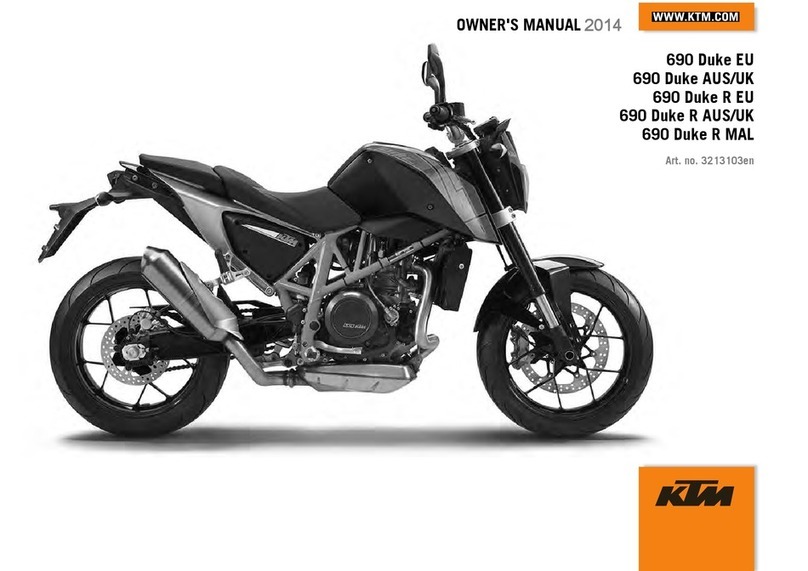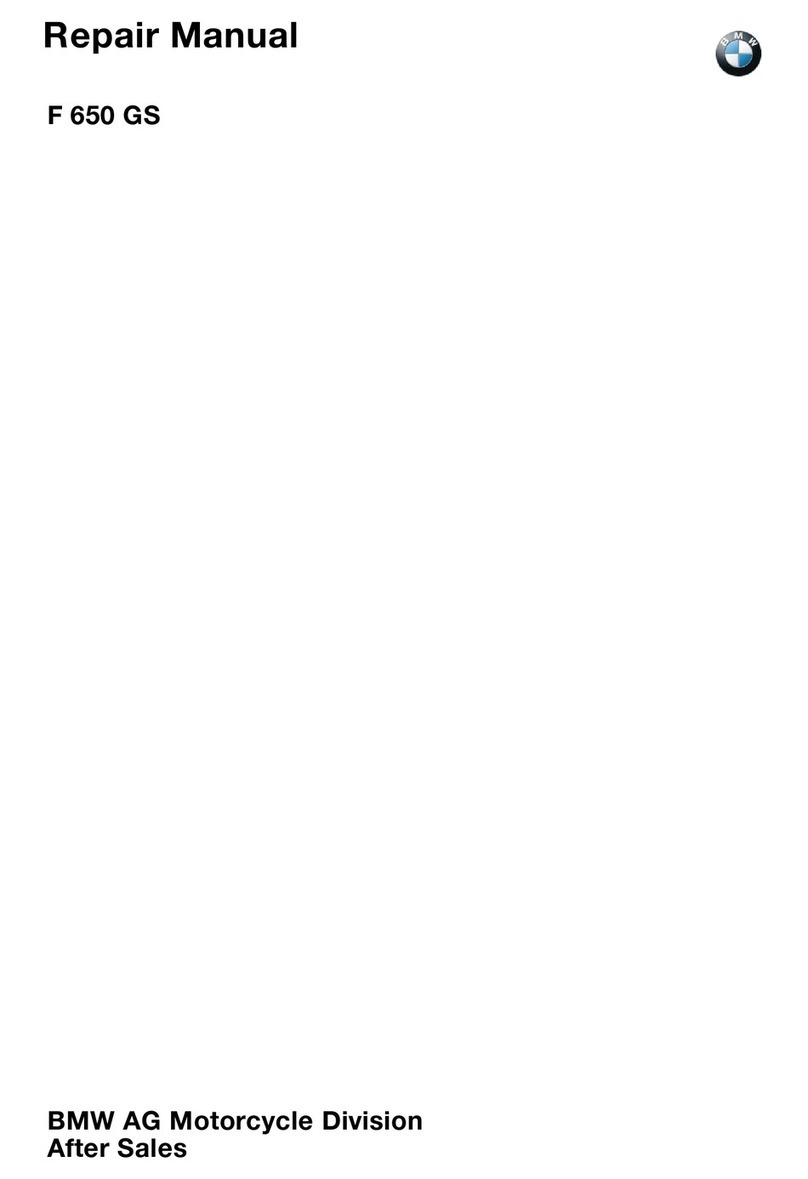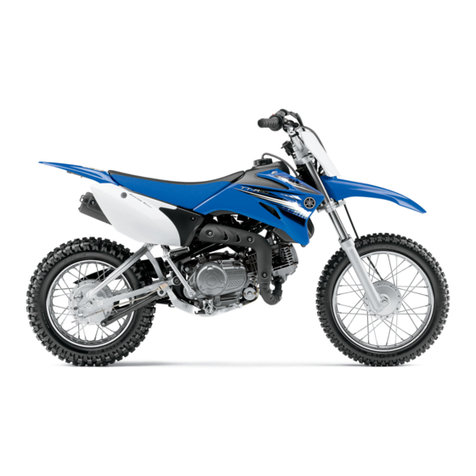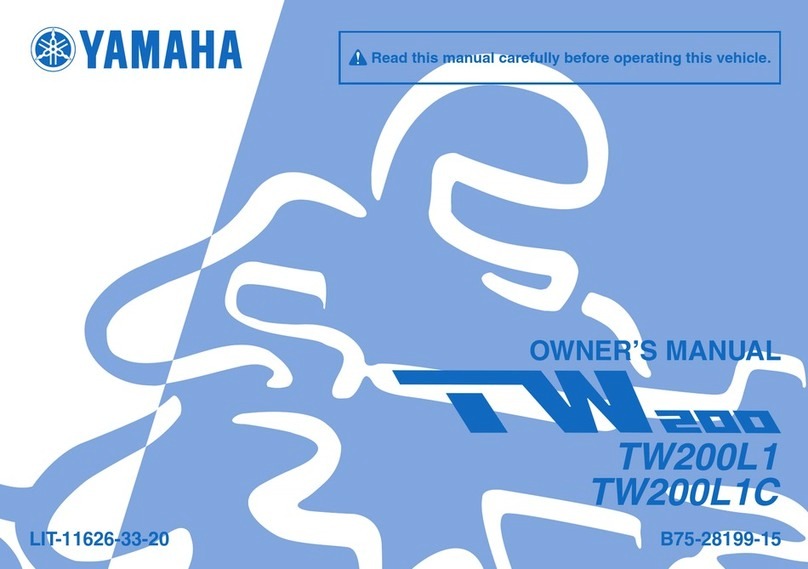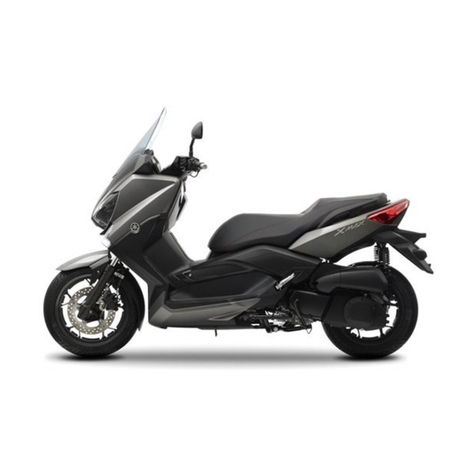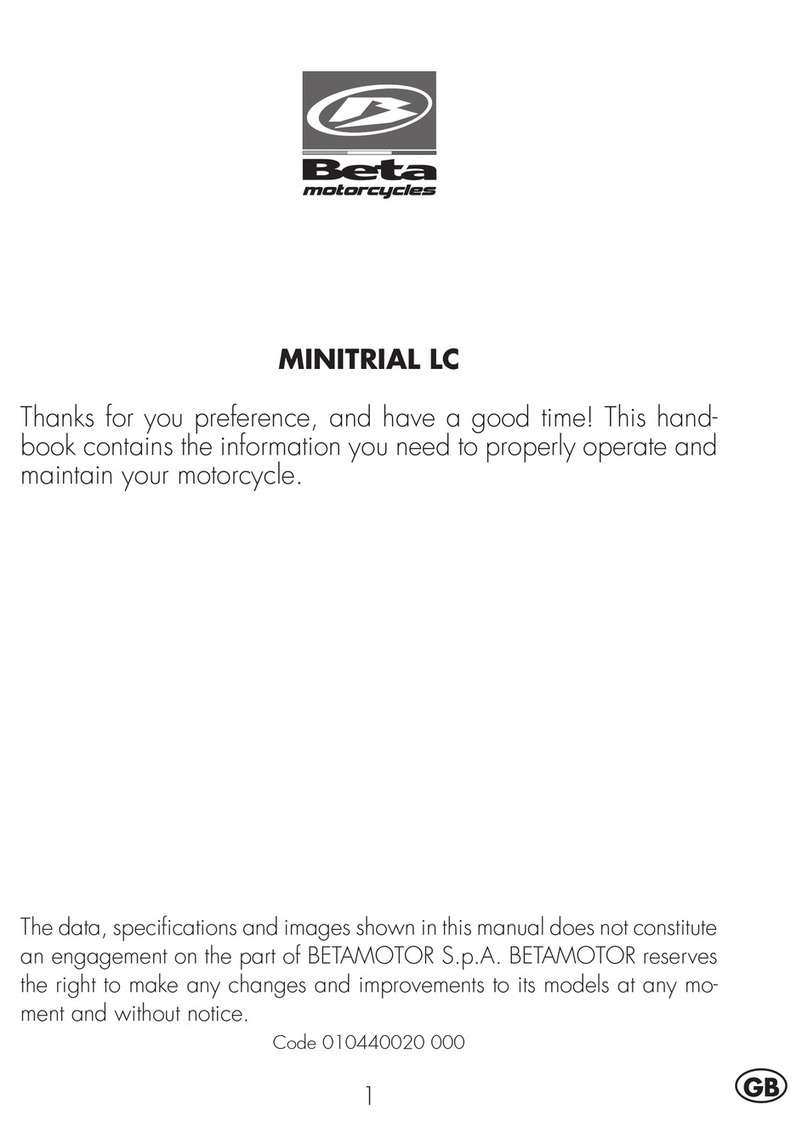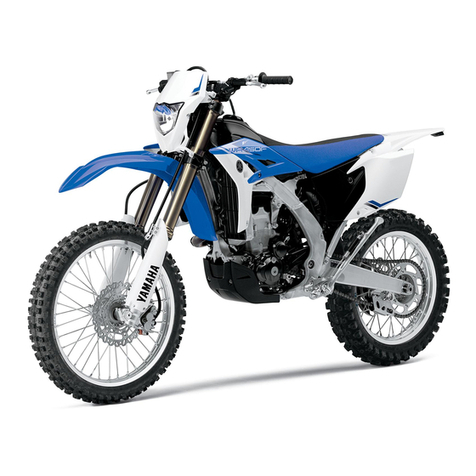Global Inc Electric Dirt Bike User manual

Electric Dirt Bike
Owner’s Manual

Read this manual completely before riding
your Electric Dirt Bike

2.1
Mechanical safety check
2.2 Safety: the basics
2.3 Riding at slopes
2.4 Wet weather riding
2.5 Night riding
3.0 List of Parts…………………………………… 6
4.0 Assembling the Dirt Bike………………… 9
5.0 Charging the batteries …………………… 14
6.0 Maintenance…………………………………… 16
7.0 Trouble shooting guide…………………… 18
8.0 Wiring diagram……………………………… 19
9.0 Warranty………………………………………… 20

(151 L x65 W x 95 H cm)
Motor Type : Geared PM brushed DC motor
Motor Power : 450W
Battery Type : sealed lead acid, gel type
Battery Contents : Three 12 V, 12Ah
Charger : 110V/220V In, 44V DC Out
Charging time : 4-6 hours
Maximum speed : up to 22 mph (35 km/h)
Maximum Range : up to 16 miles (25 km)
Max Capacity : 220 LBS (100 kg)
Net Weight : 99 LBS (45 kg)
WARNING

2.1
MECHANICAL SAFETY CHECK
Check the condition of your bike before each ride.
1. Nuts and bolts: Ensure nothing is loose.
2. Tires and Wheels: Ensure tires are correctly inflated and
the tires are in good shape. Spin each wheel slowly and
look for cuts in the tread and sidewall. Ensure that the
wheel is true. Spin each wheel and check for brake
clearance and side-to-side wobble. If a wheel wobbles side
to side even slightly, take the vehicle to your servicing
dealer.
3. Brakes: Ensure front and rear brakes work properly. The
brake handles feature controller cutoff switches. Verify
that activation of either brake prevents motor operation.
Ensure brake shoe pads are not over worn and are
correctly positioned. Ensure brake control cables are
lubricated, correctly adjusted and display no obvious wear.
Ensure brake control levers are lubricated and tightly
secured to the handlebar.
4. Handlebar alignment: Ensure the handlebar stem are
parallel to the vehicle’s center line and clamped tight
enough so that you can’t twist them out of alignment.

bike. Never allow operation of this bike by an individual
who does not have the ability to operate it safely.
3. Avoid driving this dirt bike on any paved surfaces,
including sidewalks, driveways, parking lots and streets.
4. Never operate this dirt bike on any public street, road or
highway, even a dirt or gravel one.
5. Never drive this dirt bike without wearing an approved
helmet that fits properly. You should also wear eye
protection (goggles or face shield), gloves, boots, long
sleeved shirt or jacket, and long pants.
6. Never consume alcohol or drugs before or while operating
the electric dirt bike.
7. Never operate at speed too fast for your skills. Always
drive at low speed on dusty surfaces.
8. Always keep both hands on the handlebars and both feet
on the footrests of the dirt bike during operation.
9. Always drive slowly and pay extra attention when
operating on unfamiliar terrain. Always be alert to
changing terrain conditions when operating the electric dirt

large rocks or fallen trees.
13. Never modify the dirt bike through improper installation or
use of accessories.
14. Observe all local electric vehicle laws and regulations. You
must also be aware of all local laws and ordinances that
govern and/or restrict the use of electric dirt bike. The
laws and ordinances vary greatly from municipality to
municipality. It is your responsibility to know and abide by
your local restrictions.
15. Do not ride with headphones. They distract you from
concentrating on what is going on around you, and their
wires can tangle in the moving parts of the dirt bike,
causing you to lose control.
16. Don’t do stunts, wheelies or jumps. They can cause injury
to you and damage to your dirt bike.
2.3 RIDING ON SLOPES
1. Never drive the dirt bike on hills too steep for the dirt bike
or for your abilities. Practice on smaller hills before
attempting larger hills.

4.
W
hen crossing the side of a hill, avoid hills with
excessively slippery or loose surfaces. Shift your weight to
the uphill side of the dirt bike. Never attempt to turn the
dirt bike around on any hill until you have mastered the
turning technique. Avoid crossing the side of a steep hill if
possible.
2.4 WET WEATHER RIDING
This dirt bike is not meant for use in the water. If water is
unavoidable, do not operate this dirt bike in fast flowing
water or in water level higher than the motor
(approximately one third of the wheel height). Remember
that water may damage the motor and controller and may
also affect the braking system of the dirt bike.
2.5 NIGHT RIDING
The electric dirt bike is not meant for riding at night.

1. Front Fender 7. Chain Guard
2. Front Number Plate 8. Kickstand
3.
Motor
9. Accessory Cover

1. Left Grip
2. Left Brake Handle
3. Battery Pack Cover Cap
4. Handlebar Clamp Bracket
5. Right Brake Handle
6. Right Grip/Throttle
Motor

When the battery capacity is low, only
the “mid and min” light will illuminate.
When battery is empty, only the “min”
light of the battery gauge will illuminate.
Tool Kit
1. Tool Kit Bag
2. Screwdriver
3. Allen Wrench (3 mm)
4.
Allen Wrench (5 mm)

1.
Remove the dirt bike from the
carton. Use the packing foam to
hold the dirt bike upright in a
stable position.
2. Locate the Footrest /
Kickstand, nuts and
bolts.
3. Put the Footrest and Kickstand
into position.
4. Insert bolts, then thread the nuts
onto their back-sides.

2. Insert the front axle into the
front fork (from the left side of
front fork). Be sure to include the
bushing indicated by the arrow.
3. Place the right side fork
bracket into the slot of the
drum brake.
4. Push the front axle into the
right side of the front fork. Then
secure the nut into place.
5. Tighten the nut using two of
the included wrenches.

2. Place the bolts and nuts through the
forward holes, and tighten using the 10
mm wrench.
3. Tighten the screws, with washers,
into the aft holes using the enclosed
screwdriver.
Mounting the Handlebars
1. Push the right brake lever
over the right side of the
Handlebar.

3.
Lift the handle bar into an
upright position. Ensure that
the handle bar is in a
symmetrical position.
4. Fasten the 4 bolts into the
handle bar clamp bracket
using the 8 mm wrench.
5. Rotate the brake levers and accelerator into proper
position and tighten the screws using the enclosed allen
wrenches.

Remove the cap and the battery
cover.
2. Remove the connecting
socket, which is on the right
side of the battery pack.
3. Unlock the battery by turning
the key counter-clockwise in the
lock.
4. Lift the battery pack out of
the Ripper, using its handle.

1. To charge the battery remotely, remove the battery
pack. (See the steps in “Removing the Battery”).
2. Charge the battery by connecting the charger
output to the battery pack, and plugging the
charger input plug into a wall outlet.
3. Charge the battery for 4-6 hours. A red light on the
charger shows the battery is charging. The red light
will turn green when the battery is almost fully
charged.
NOTE:
The battery pack should be charged standing

Adjusting the Drum Brakes
1. The brake cables primary length adjustment is at the
brake drum housing, where the brake cable terminates
with a small bolt with a saddle-nut.
2. The brakes are tightened by turning the saddle-nut
clockwise, and loosened by turning the saddle-nut
counter-clockwise.
3. Adjust the brakes so that when the brakes are fully
squeezed, the lever handles are about 1 inch (2.5 cm)
from the hand grips.
Saddle nuts
6.0 MAINTENANCE
Battery
1. Do not disassemble the battery pack by yourself. For

days or more.
5. To retain charge cycle depth, the battery may be
“exercised” by being fully discharged, then recharged,
every 2 or 3 months. But remember:
NEVER store the battery in a depleted state.
Other Components
The electric dirt bike should be inspected from time to time.
Refer to the maintenance schedule below.
check
? adjust ? lubricate ¦

tight.
Brake pads-to check for wear. ? ?
Wheel rim- to ensure it is not distorted. ???
Frame and front fork- to ensure they are
not distorted. ???
Brake-to ensure proper function. ?? ?
Charger cable and other cables-ensure it
is not frayed. ?
Throttle- to ensure that it is working
properly. ?
Steering system-to ensure operation is
normal. ?? ?? ¦
Wheel axle- to ensure if it is loose ?? ¦
Motor-ensure it is working properly. ?? ?? ?
NOTE: Front axle, rear axle, flywheel, front fork,
suspension fork, and mounting point should be cleaned and
lubricated every half to a year. Inner turning parts have
been lubricated, further lubrication is not required.
7.0 TROUBLESHOOTING GUIDE
Problem Cause Solution
Battery gauge
1. Loose connection
This manual suits for next models
1
Table of contents
